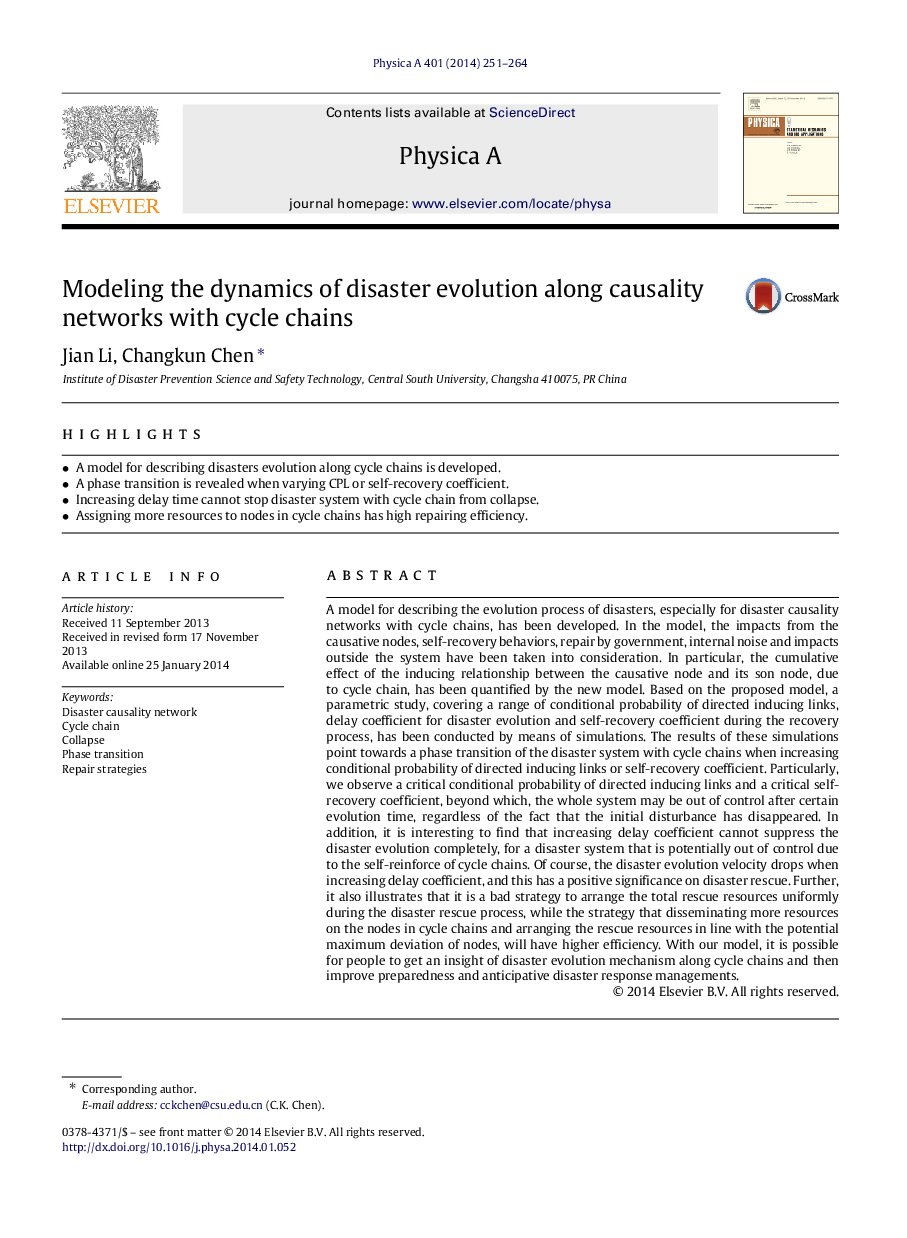| کد مقاله | کد نشریه | سال انتشار | مقاله انگلیسی | نسخه تمام متن |
|---|---|---|---|---|
| 975555 | 1480172 | 2014 | 14 صفحه PDF | دانلود رایگان |
• A model for describing disasters evolution along cycle chains is developed.
• A phase transition is revealed when varying CPL or self-recovery coefficient.
• Increasing delay time cannot stop disaster system with cycle chain from collapse.
• Assigning more resources to nodes in cycle chains has high repairing efficiency.
A model for describing the evolution process of disasters, especially for disaster causality networks with cycle chains, has been developed. In the model, the impacts from the causative nodes, self-recovery behaviors, repair by government, internal noise and impacts outside the system have been taken into consideration. In particular, the cumulative effect of the inducing relationship between the causative node and its son node, due to cycle chain, has been quantified by the new model. Based on the proposed model, a parametric study, covering a range of conditional probability of directed inducing links, delay coefficient for disaster evolution and self-recovery coefficient during the recovery process, has been conducted by means of simulations. The results of these simulations point towards a phase transition of the disaster system with cycle chains when increasing conditional probability of directed inducing links or self-recovery coefficient. Particularly, we observe a critical conditional probability of directed inducing links and a critical self-recovery coefficient, beyond which, the whole system may be out of control after certain evolution time, regardless of the fact that the initial disturbance has disappeared. In addition, it is interesting to find that increasing delay coefficient cannot suppress the disaster evolution completely, for a disaster system that is potentially out of control due to the self-reinforce of cycle chains. Of course, the disaster evolution velocity drops when increasing delay coefficient, and this has a positive significance on disaster rescue. Further, it also illustrates that it is a bad strategy to arrange the total rescue resources uniformly during the disaster rescue process, while the strategy that disseminating more resources on the nodes in cycle chains and arranging the rescue resources in line with the potential maximum deviation of nodes, will have higher efficiency. With our model, it is possible for people to get an insight of disaster evolution mechanism along cycle chains and then improve preparedness and anticipative disaster response managements.
Journal: Physica A: Statistical Mechanics and its Applications - Volume 401, 1 May 2014, Pages 251–264
